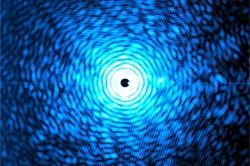New research shows phonons are crucial in quantum interactions
DCCM researchers found that phonons dominate most correlated- material interactions, in contrast to a strongly held view in the scientific literature that labels electron-electron interactions as the most likely key influencers. If scientists can discover how to harness the amazing properties of these quantum materials, it could lead to a new wave of technology and innovation. Using light, the project team explored the properties of the materials, and showed that light-induced transitions from insulator to metal phases were caused by light affecting the crystal vibrations, and were not in fact due to a change in the electron-electron interactions. ‘These results are important because they challenge the majority of models currently describing these materials,’ says project coordinator Prof. Simon Wall of the Institute of Photonic Sciences (ICFO) in Spain. ‘They suggest that there is a ‘missing ingredient’ that may help us make a breakthrough in our understanding.’ New technological developments The findings may eventually lead to novel innovations in technology. Correlated materials have a lot of potential due to their spectacular properties, such as high temperature superconductivity and the ability to switch between insulating and metallic states at elevated temperatures. But without knowing exactly how these materials exhibit these phenomena, it is difficult to incorporate them into new devices and systems. Another issue arises because scientists need to separate the materials to study them further, but since the electronic and spin interactions compete on a similar energy scale, this is not easy to do. An in-depth understanding of quantum materials at the nanoscale level is also needed before they can be effectively incorporated into new technologies, as strong competition between the interactions of electrons and magnetism at this scale can lead to drastic changes. Another result of the project was the development of a new imaging technique that allows scientists to view a range of phenomena in quantum materials for the first time, and this could enable researchers to further explore the nanoscale properties of these materials. The kinds of devices that could potentially be developed include high temperature superconductors that could replace the expensive magnets in MRI machines or particle accelerators, both of which currently need to be cooled to extremely low temperatures in order to function correctly. The magnetic and electronic functionality of quantum materials could also be used in new non-volatile high-speed memory. Lattice anharmonicity and the origins of high temperature superconductivity The next steps for the DCCM researchers involve further focus on the role of phonons in high temperature superconductivity. They will take part in the project SEESUPER, funded by the European Research Council (ERC) that aims to examine whether lattice anharmonicity can explain the origins of high temperature superconductivity. Lattice anharmonicity allows phonons, which would normally be independent, to couple together. This coupling can, in turn, modify how electrons interact with the lattice and could be a factor that enhances superconductivity. The aim will be to apply the techniques developed in DCCM to examine how nanoscale defects and phase separation modify anharmonicity and if this can explain the origins of high temperature superconductivity.







